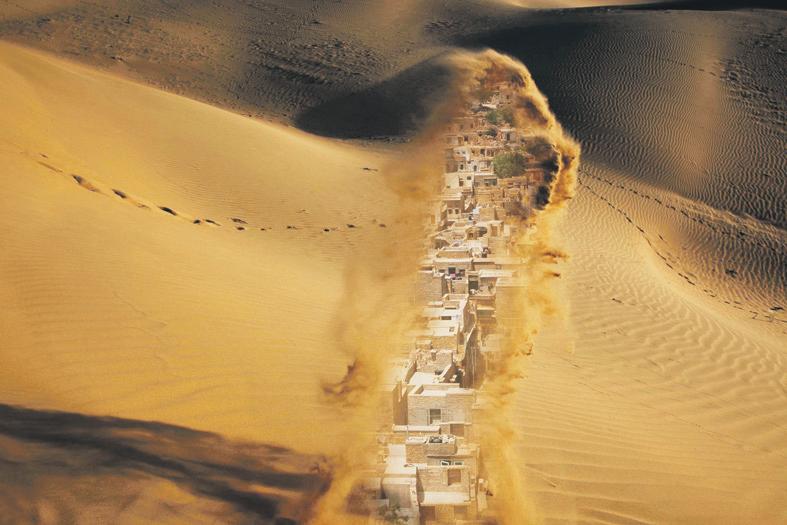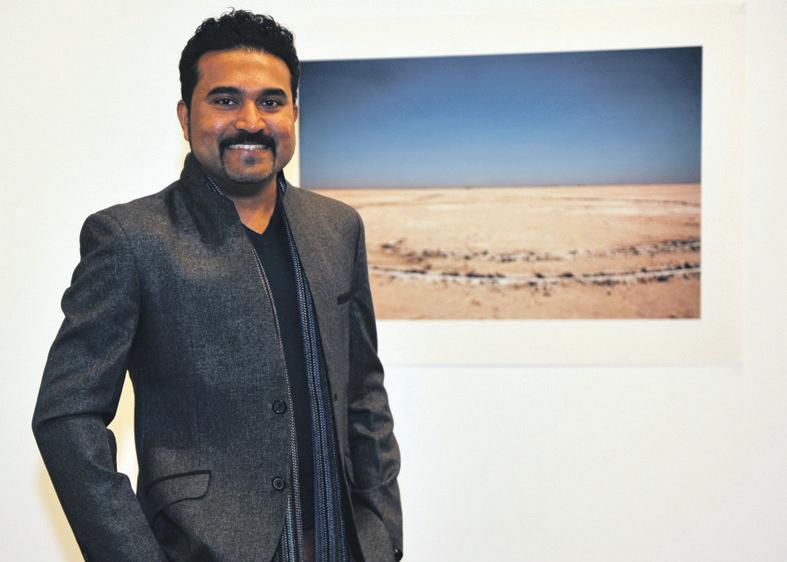
2 minute read
The magnificence
from 2013-11 Melbourne
by Indian Link
Delhi-based artist Gigi Scaria’s new exhibition Dust, at the Ian Potter Museum of Art, takes viewers on a captivating journey through the beauty of India’s desolated salt deserts
fulfilment.
Scaria is usually associated with complex images of megacities that are the result of economic and construction booms, where vehicles, buildings and telecommunication lines are emphasised, which reflect his concern with the rapid excavation of the land.
“When I came to Delhi I began thinking about its impossible systems, size and mechanisms,” says Scaria. “That was when I discovered that these are huge issues... it’s troubling that we can’t treat our environment properly”. However, Dust takes a different approach; it pictures the geography of the Indian landscape in its raw and glorified form, where nature seemingly overpowers population.
“It can feel as if I have depopulated the spaces, although I haven’t actually ‘done’ anything to them. If there are no people in a photograph, I haven’t ‘deleted’ them, they were never there’, says Scaria.
The exhibition features a largescale painting, a video-sculpture installation and large-format immersive photographs of sandy plains, white salt lakes, and the cracked mud of droughts past. What unifies the collection of works are the crisp horizon lines, unnamed locations, the man- imagery of sedimentary textures; dune, dust, salt, sand, silt, sludge, and the enormity of the landscapes. These elements suggest landscapes that could be anywhere, such as Russia, or a part of the United States, South America or even the arid heartland of Australia.
While Scaria has never ventured into the Australian outback, he has gained familiarity and interest with Australian cities while residing in Melbourne in 2012 as a Macgeorge Fellow during the Australia-India Year of Friendship. During this time, he exhibited Prisms of Perception at the Ian Potter Museum of Art and travelled around Victoria, and by road to Canberra. He took inspiration from the vast geography of the regions, culture, human interventions in the land as a result of the gold rush in Victoria, and from histories of migration.


Scaria naturally compares the Australian landscape with the landscapes of his past, or childhood memory in his home state, Kerala which is densely settled, but also lush and tropical.
“When you explore places that are distinctly different, which have no connection with your past, you compare ‘your’ landscape with the new landscape in front of you,” says Scaria. “We make this comparison when we move from one city to another, one territory or nation to another”.
His photographs of “India’s outback” are a response to the enormous Australian landscape.
Dust illuminates the artist’s travels to inhospitable locations, including the Rann of Kutch, a salt desert situated on India’s south-western border with Pakistan; and the sands that meander around Jaislamer, a city in the Thar Desert in Rajasthan, also on India’s border with Pakistan. Scaria visited these remote places upon his return home from Australia, where he captured approximately 700 photographs, in which 17 appear in the exhibition. Scaria has ‘beautified’ the sites of dispute, focusing attention on his solitary retreat and sensory experience as an adventurer, rather than







